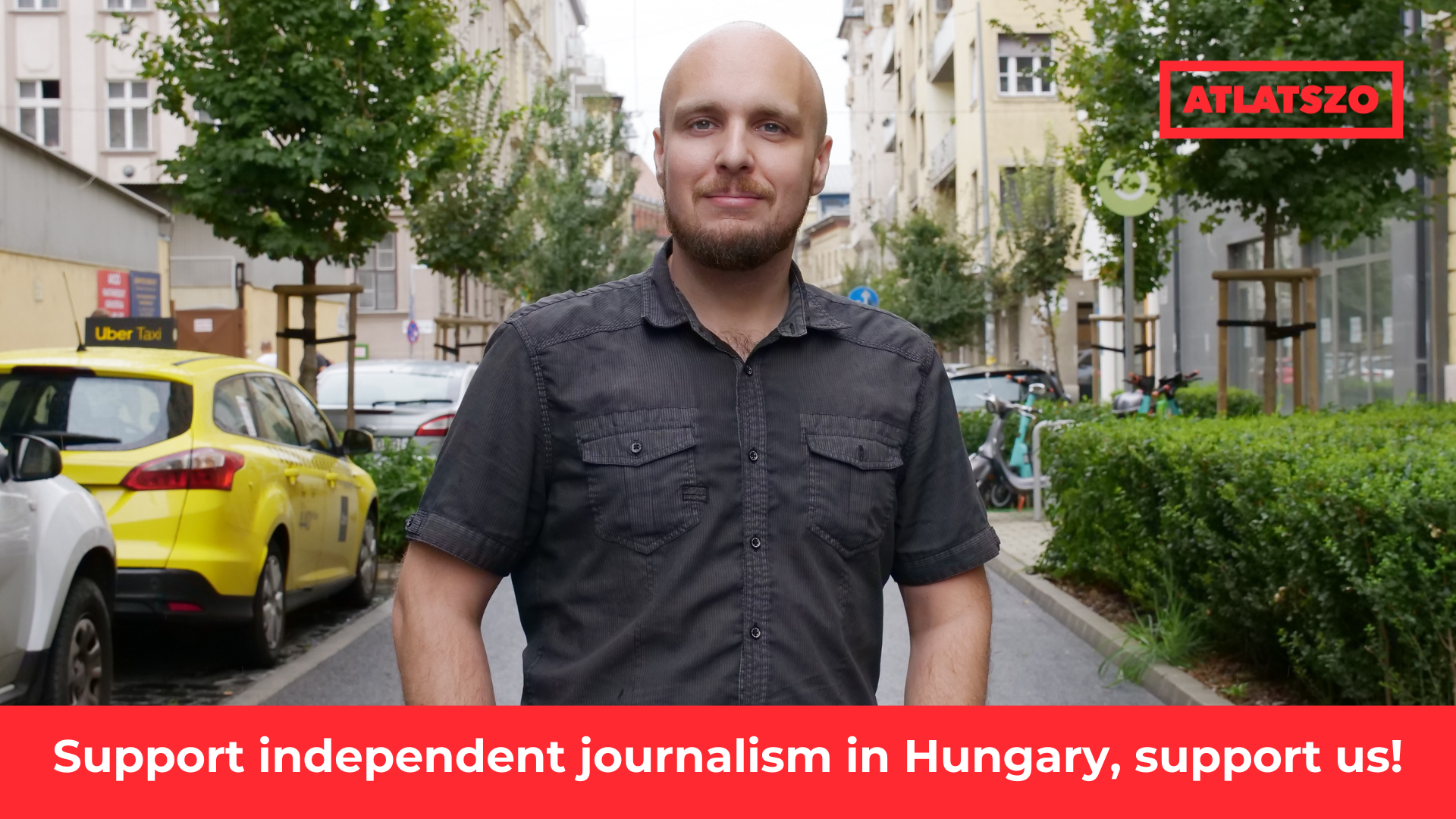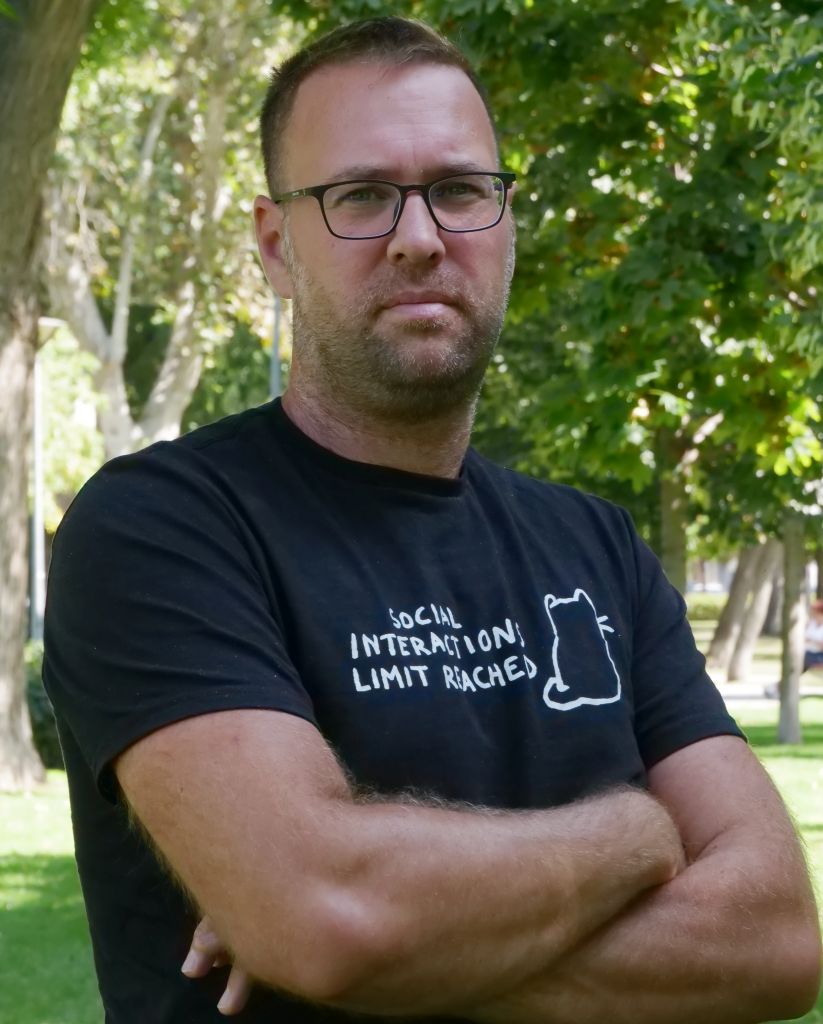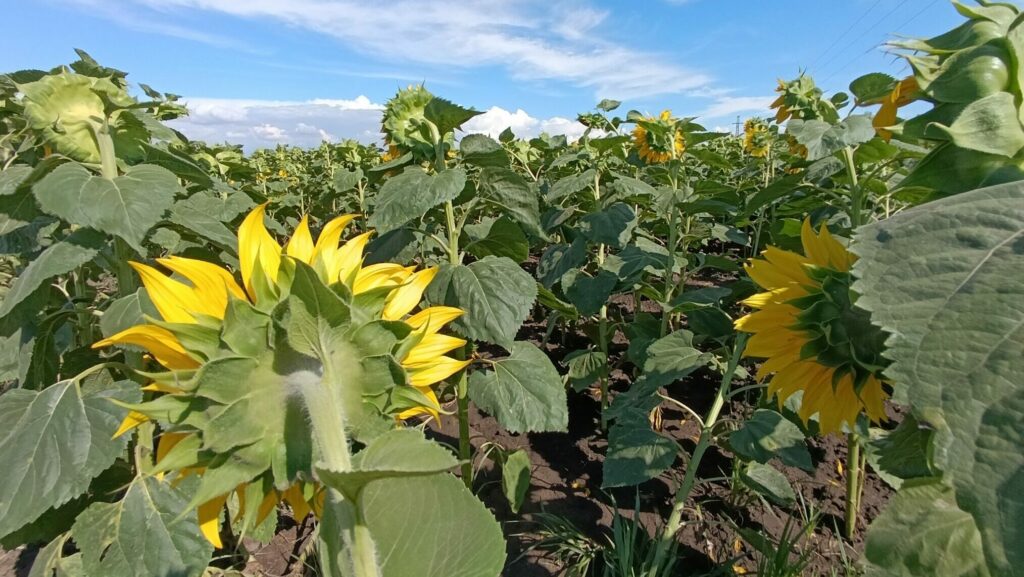The https://english.atlatszo.hu use cookies to track and profile customers such as action tags and pixel tracking on our website to assist our marketing. On our website we use technical, analytical, marketing and preference cookies. These are necessary for our site to work properly and to give us inforamation about how our site is used. See Cookies Policy
The government offers free irrigation water for farmers, but few can actually use it
Despite the fact that 2024 was an extremely dry year, farmers in the Eastern Hungary Water Management Directorate requested less irrigation water than in the previous year – this is just one of the strange data point shown in the statistics we received with a freedom of information data request. Although the government promised irrigation improvement in the draught-stricken Eastern Hungary in 2022, KSH data shows that the irrigated area had declined by 2024.
In late 2022, István Nagy, Minister of Agriculture spoke at the opening ceremony of „Hungary’s largest irrigation improvement project”, a new irrigation system installed at the Mezőhegyes horse ranch, a nationally owned estate directed by the billionaire Minister of Transportation, János Lázár.

Nagy promised that “the government has set a target to double the irrigated area by 2024, reaching 200,000 hectares, and then by 2030, 350,000 hectares will be irrigated again.”
To the sorrow of farmers, recent summers have been characterized by extreme weather. 2022 saw massive draught, 2023 had extreme rainfall. 2023 was dry again, while 2024 and this summer is slowly turning disastrous. However, the government’s promise of irrigation improvement has not materialized. According to the KSH, the national statistics bureau, the net size of irrigated land has fallen to 130,000 hectares by 2024, 3,000 hectares smaller than 2022.
Drought, rainy year, drought, drought
2022 was stunningly dry, with rainfall in the April-August period only half the usual amount, and Europe was hit by major heat waves (June-September). It is estimated that 500,000 hectares of crops were affected by the drought, with agricultural losses exceeding €1 billion, particularly for maize and sunflowers. According to the KSH, barley yields fell by 10 percent, wheat by 21 percent, maize by 57 percent, sunflowers by 29 percent and rape by 31 percent.
In the autumn of 2022, the Minister of Agriculture said,
“in recent years, considerable efforts have been made to develop irrigation farming: irrigation communities have been established (currently 142 are recognised, covering a total of more than 63,000 hectares; 73 more are in the process of being established) and tens of billions of forints have been invested in irrigation. (…) Irrigation can be built at a cost of around 3 million forints (7500 EURs) per hectare and the payback period for these investments has been reduced to less than 10 years due to climate change.”
2023 was the wettest year on record. HungaroMet’s summary says, “with frequent wet and unstable air waves in the summer, and frequent cloud formation, resulting in above long-term average precipitation this summer after two dry summers”.
In 2024, the weather turned dry again.
“Spring started in early February and continued into the beginning of calendar spring. The development of vegetation was two to three weeks ahead of normal throughout the season, with only a temporary pause in the second half of April. The wettest period, which traditionally follows June 8, also occurred a month earlier, at the end of spring and beginning of summer. The weather for the rest of the summer was characterised by prolonged, strong heat waves and increasing drought, which caused significant heat stress for vegetation and forced bleeding for our summer catch crops”.
Last year, the news portal 24.hu reported that “the government took a big burden off farmers’ shoulders last year by taking over the water service charge. The cabinet has decided to provide free irrigation water to farmers this year too, making it easier for them to protect themselves against possible droughts”. This meant that that farmers could irrigate for free in the rainy year of 2023 and again in 2024.
Drought typically affects the eastern part of the country, and we wanted to find out how irrigation has developed here. The KSH data already showed that the irrigated area had decreased by 2024, meaning that the government’s promise of 2022 had come to nothing.
There’s never a shortage of promises
The government sees the free irrigation water as a kind of panacea that will solve everything. However, the yearly HUF 8-10 billion (20-24 million EUR) allocated for water dwarfs the actual necessary costs, since only on János Lázár’s estate did the sewerage and irrigation system cost that much in 2022, and it would probably cost more by 2024.
The farmers were promised something else in 2024 along with the free water. The Ministry of Agriculture wrote:
“The Ministry of Agriculture is paying particular attention to the development of irrigated farming through its ongoing programmes and the tenders it will announce. The aim is to reach nearly 350,000 hectares of irrigated land by 2030. The Rural Development Programme has supported 962 farmer irrigation projects in the country, worth almost HUF 83 billion (207 million EUR)”
In the autumn of 2024, we therefore asked the Ministry in a freedom of information request of applications for irrigation development had been launched after January 2024 and how many of them had been processed.
The Ministry’s press office replied:
“With regard to your request for information submitted to the Ministry of Agriculture regarding the applications for support for irrigation development that have been launched and evaluated, please note that since January 2024, only one call for proposals, CAP-RD01a-RD12-1-24, Horticulture – Support for planting and cultivation of medicinal plants, has been launched under the CAP Strategic Plan, under which beneficiaries may apply for support for activities related to the development of irrigation infrastructure. Applications for support under this call for proposals will be open from 10 September 2024, and it is therefore not possible to provide information on the evaluated applications”.
In other words, contrary to previous statements, there were no draught relief programs until autumn 2024. The few they had were not for arable land either, and the HUF 25 billion (EUR 64 million) was available until 28 April 2025, meaning that it is unlikely to have any impact in 2025. In other words, ‘special attention’ was paid to irrigation development in a way that did not actually exist for arable crops.
Free water in vain
At least the government covered the cost of irrigation water in 2023 and 2024. In a public interest request for information, we asked the water boards of Eastern Hungary for information about the amount of water by region claimed by farmers. As a reminder, 2023 was a wet year and 2024 a drought year.
The amount of water allocated by each directorate is shown on this map:
Change in water demand during the irrigation season in some water boards
Despite the draught, farmers claimed only 2% more free water than during the wet year. The largest increase was in the eastern water directorate (TIVIZIG), where farmers requested 15 percent more water. In the data request, only the names of non-private irrigators were provided, which shows that 122 farmers requested free water in 2023 and 131 in 2024.
In other words, the number of users has barely increased,
but this is not surprising as irrigation requires infrastructure investment, not just free water.
In the Lower Tisza Water Directorate (ATIVIZIG), water consumption was up by 7%, while the other directorates requested less water in the drought year than before. In other words, free water helps farmers to cut costs, but it does not mean more canals or irrigated areas. Free water has conserved rather than improved irrigation, but it has also been a lifeline for farmers in the face of ever-changing grain prices.
Irrigation may not be the solution
“We have a 400 hectare area near Szeged, where there are so-called drainage pipes running 60 centimetres deep in the ground. It’s not a new invention, it was already there at the time of the regime change, but it was not used, it was ruined. Now it is being revived, pumps are being installed and the system is being cleaned. We estimate that this will cost around 100 million HUFs (250 000 EUR), and we are waiting for a tender,” László Földi, owner-director of the agricultural firm Agroplanta Kft. told Átlátszó.
Földi also said that this solution means that the water pumped into the canal is not sprayed over the fields, instead the soil is kept moist through the pipes. This is more efficient since less of the water can evaporate.
“We have not ploughed for 10 years, we produce with no-till technology, which is good for the soil and water, but it has its drawbacks. If we have irrigated areas, we only plant spring crops there. Because now spring crops have hardly any chance because of the heat and drought,”
he continued.
He calculates that irrigation can produce up to 4 tonnes more maize per hectare. “Irrigation won’t save everything either. I used to say to my colleagues, just because I put you out in the hot tub at 10 a.m., you’re still going to get sunstroke. The plants are the same way, we measure 60-70 degrees in the hot sun. That’s why we’re looking at what we can sow.”
Agroplanta Ltd. has also tried sorghum, but now they are letting it go because it is not yielding the results they had hoped for.
“Going back to irrigation, in our area in Sándorfalva, if we pumped out 1 cubic metre of water, half of it reached the irrigator. The rest evaporated. The loss is enormous. Moreover, constant irrigation changes the soil structure, it’s a vicious circle. Without it there is nothing, but with it comes new challenges in the long term,”
he explained.
According to Földi, free water may be good, but it is far from enough. Improving irrigation also requires a tender and the will to do it. “The land structure is very fragmented, nobody dares to invest in rented land. We farm almost 2000 hectares, a third of which we own,” he said. He thinks it would be good if a tenth of the country’s 5 million hectares could be made irrigable. “We can feed 1 in 10 hungry children,” he concluded.
Written by Csaba Segesvári, translated by Zalán Zubor. The original Hungarian story can be found here. Cover photo by Csaba Segesvári.

